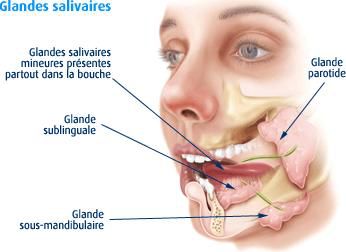-
 Reverse engineering
Reverse engineering
-
 Libration
Libration
-
 Ileum
Ileum
-
 Large Canary Island Telescope
Large Canary Island Telescope
-
 Metabolic crossover
Metabolic crossover
-
 M35
M35
-
 LISA
LISA
-
 Disinfectants
Disinfectants
-
 Anti-hormone
Anti-hormone
-
 Juvenile water
Juvenile water
-
 Ferromagnetism
Ferromagnetism
-
 Immune system
Immune system
-
 Viking 1
Viking 1
-
 Bronchiole
Bronchiole
-
 Colonoscopy
Colonoscopy
-
 Agglutination
Agglutination
-
 Spar
Spar
-
 Blood-brain
Blood-brain
-
 Variable
Variable
-
 Auto-immune diseases
Auto-immune diseases
-
 Weeping willow
Weeping willow
-
 LOX
LOX
-
 Oligocene
Oligocene
-
 Allosteric site
Allosteric site
-
 Prestel
Prestel
-
 Monzonite
Monzonite
-
 Somatic
Somatic
-
 i-mode
i-mode
-
 Call waiting indication
Call waiting indication
-
 Heinrich Event
Heinrich Event
Salivary gland
The salivary glands are part of the digestive system.
Function of salivary glands
The salivary glands produce a fluid called saliva which bathes the mouth, keeping the mucosal membranes moist and also performing the first stage of digestion and facilitating the passage of food into the stomach.
The salivary glands are exocrine glands that excrete saliva. Saliva composed of water (99%), inorganic substances (ions), organic substances (glucose, urea, hormones), and digestive enzymes (amylase, lipase, lysozyme, etc.). In addition to its role in digestion, saliva also has an antiseptic action that specifically protects the teeth from caries.
More than a litre of saliva is secreted daily, only half of which is during meals. Salivation is a reflex triggered by the presence of food in the mouth or by smells or emotions. The salivation reflex is innate but can be acquired, as was shown in the famous Pavlov's dogsexperiments).
Structure of the salivary glands
There are six salivary glands, three on each side of the mouth composed of different cell types:
- the parotid glands, located behind the mouth beneath the ears which secrete the largest amount of saliva. Saliva is poured into the cheek through the Stenon duct. These are almost exclusively composed of serous cells ;
- The sub-maxillary glands are located beneath the angle of the mandible and pour saliva through the Wharton duct beneath the front of the tongue. The secretory cells are mixed (mucosal but above all serous).
- The sub-lingual glands are located beneath the tongue and secrete saliva through many ducts. It has mixed secretory cells (serous and particularly mucus).
The salivary glands are contained in vascularised innervated connective tissue capsules. The secretory cells (mucosal or serous) are assembled in clusters (acini) but secrete saliva into their cavity. The acini are surrounded by small muscles which facilitate the expression of your saliva.
 The three types of salivary glands: the parotid glands (1), the sub-maxillary glands (2), and the sub-lingual glands (3). © DR
The three types of salivary glands: the parotid glands (1), the sub-maxillary glands (2), and the sub-lingual glands (3). © DR
Latest
Fill out my online form.



